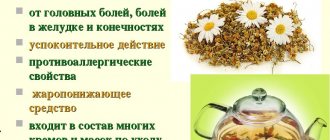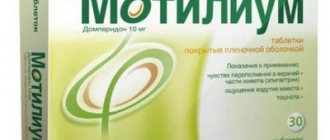Chamomile for gastritis and other diseases of the digestive system has been used since ancient times in traditional medicine of different peoples. This medicinal plant has several properties that are useful for inflammation of the mucous membranes of the gastrointestinal tract (GIT). Ancient recipes have stood the test of time and science. Therefore, today chamomile for gastritis is recommended by both herbalists and gastroenterologists. Let's consider how it will be useful for inflammation of the stomach, how best to use it, and which variety is most effective.
What is gastritis?
The diagnosis of gastritis indicates an inflammatory process in the mucous membrane lining the inside of the stomach. In the absence of treatment, dystrophic changes occur in the foci of inflammation: cellular metabolism is disrupted, the epithelium is structurally damaged and loses its ability to regenerate. In place of the gastric glands, fibrous tissue is formed that is unable to produce digestive secretions. This means that the main function of the stomach is disrupted.
Unfortunately, gastritis of varying severity occurs in half of modern people [1]. The leading reasons for its development are considered:
- bacterial, fungal and parasitic infections, and most often inflammation, as with a stomach ulcer, is provoked by the bacterium Helicobacter pylori;
- smoking and alcohol abuse, especially strong alcohol;
- long-term use of aspirin, non-steroidal anti-inflammatory drugs, glucocorticosteroids and other drugs that irritate the mucous membrane;
- radioactive and chemical damage;
- prolonged exposure to stress.
Gastritis manifests itself as indigestion, pain and heaviness in the stomach, belching, nausea, heartburn, and intestinal disorders. However, an accurate diagnosis is made only on the basis of research results: FGDS - fibrogastroduodenoscopy, determination of the pH of gastric juice, biopsy of gastric mucosal tissue and analysis for Helicobacter pylori.
Although modern medicine has a wide range of medicines to relieve stomach inflammation and correct acidity, chamomile for gastritis also remains in the arsenal of antigastritis drugs. The reason for this is its effectiveness and naturalness, the absence of addiction to it and those dangerous side effects that potent synthetic drugs have.
General information about the plant
Chamomile is an annual plant that belongs to the Aster family. It comes in several types:
- garden white and yellow;
- pharmacy;
- Persian;
- German and Caucasian.
Chamomile is used for medicinal purposes. This is a time-tested, strong and reliable remedy that has beneficial properties for the body. The flowering period of the plant is from May to August. Most often, inflorescences with pedicels are collected in dry sunny weather at the beginning of flowering. Their length should not exceed 3 cm. Then the flowers are dried in specially created conditions.
Chamomile is collected in spring and summer, since its marginal reed flowers are located horizontally and during this period the plant is rich in necessary biologically active substances. If this moment is missed, then during the drying period the plant’s basket disintegrates and beneficial essential oils evaporate.
It is recommended to store dried chamomile for no more than a year in a well-sealed container.
Composition of chamomile
This medicinal herb contains a complex of unique elements and substances that provide the prevention and treatment of stomach disease. These elements complement each other perfectly, and the uniqueness of their properties cannot be overestimated. Chamomile includes:
- essential oils;
- flavonoids;
- tannins;
- polysaccharides;
- vitamins;
- salicylic, stearic, oleic, as well as isovaleric and palmitic acid.
Properties of flowers
For stomach and duodenal ulcers, as well as for various forms of gastritis, chamomile can destroy pathogenic microflora, acting as a natural antibiotic. Thanks to the content of a huge amount of essential oils, inflammatory processes are effectively stopped, severe pain and spasms are relieved throughout the digestive tract.
The oil serves as an excellent wound healing agent, which is important in the fight against chronic diseases of the stomach and intestines. The astringent property of the plant contributes to the rapid restoration of the mucous membrane. Chamomile is able to remove dangerous and harmful toxins from the body, and also reduces the likelihood of the formation of malignant tumors.
The substances in medicinal chamomile dilate blood vessels, thus relieving internal swelling by normalizing blood flow. The healing properties of this plant ensure successful treatment of ailments and prevent disruption of the functioning of the digestive system. They relax the mucous membrane, reduce the formation of gases, eliminate fermentation processes and activate the functions of the digestive organs.
In addition, chamomile flowers have a choleretic effect, which is important when establishing proper functioning of the gastrointestinal tract.
It has been proven that the components of this herb suppress the activity of the Helicobacter pylori bacterium, increasing the defenses of the immune system and stimulating the growth of its resources.
Is it possible to drink chamomile for gastritis instead of medications?
The answer to this question depends on the degree of existing damage to the gastric mucosa, as well as on the stage of the disease. During an exacerbation, chamomile should be used as an adjunct that enhances the effects of medications prescribed by a doctor. It is very risky to completely abandon the latter. But during the period of remission, when the symptoms are weakened or completely disappeared, chamomile for gastritis is quite capable of minimizing the drug load on the body.
However, people with chronic gastritis, who already have morphological changes in the gastric mucosa, are unlikely to be able to completely stop taking medications. This issue should be discussed with your doctor based on the results of the examinations. In any case, this category of patients can be recommended to treat gastritis with chamomile in the periods between courses of drug therapy.
But for those who have suffered acute gastritis that has not turned into a chronic form, chamomile is suitable at the final stage of therapy and as a prevention of relapse.
Chamomile-based medicinal products
The pharmaceutical industry produces many drugs with chamomile, which are actively used in the treatment of gastritis.
Among them:
- Rotokan;
- Azulan;
- Iberogast;
- Romazulan;
- Phytogastrol.
Medicines for gastritis, which include chamomile.
The therapeutic regimen and course duration are determined by the attending physician depending on the nature of the disease.
Chamomile for gastritis with high acidity
In most cases, the gastric epithelium becomes inflamed due to a shift in the acid-base balance towards increasing pH. Excessive acidity of gastric juice is more common in young and middle-aged people. It causes pain and burning in the epigastrium, belching and other digestive disorders.
With this form of the disease, the patient is advised to strictly limit his diet, leaving exclusively stomach-friendly foods and drinks on the menu. In this regard, the relevant question is: is it possible to drink chamomile for gastritis with high acidity? Will it raise the pH even more? Practicing herbalists and herbalists recommend using this plant at any pH, as it does not have a significant effect on the level of hydrochloric acid. Moreover, the tannins it contains have a slight alkalizing effect. All other properties of chamomile will definitely be useful for all types of gastritis.
Blanks
Chamomile flowers are collected in the summer months. In June and July, the flower is ripe and contains a maximum of nutrients. Collection is carried out in the morning, in dry weather.
It is recommended to collect it further from roads, as chamomile absorbs all toxic substances. How correctly the hydration process occurs, so will the quality of the medicinal decoction or infusion obtained from the plant.
It is necessary, having collected chamomile inflorescences, to dry them as quickly as possible, and best of all, in a cool, dark room. It is necessary to avoid direct sunlight on the raw materials, as they destroy medicinal substances.
At home, dried chamomile should be kept in paper bags. The raw materials are suitable for use for 2 years.
Healing properties of chamomile Chamomile has the ability to suppress the activity of pathogenic microorganisms, relieve inflammation and normalize the motility of the smooth muscles of the large and small intestines, which makes it indispensable in the treatment of: Constipation. Dyspeptic disorders. Pain and cramps. Colic. Flatulence.
It should be remembered that taking the plant is strictly prohibited in case of vomiting, nausea and diarrhea, since due to the medicinal properties of this plant, a significant aggravation of symptoms is possible. Taking the decoction on an empty stomach can also worsen the condition.
The plant has all the necessary properties that are useful as therapy for gastritis:
- healing of wound mucosal surfaces;
- inhibition of inflammation;
- anesthetic qualities (for colic);
- regenerating.
Chamomile in the form of decoctions and infusions can be prepared for oral administration. Can be used as a replacement for coffee or tea drinks. For problems with the respiratory system, it is recommended as a means of disinfecting and cleansing the bronchi.
Chamomile, with all its beneficial qualities, contributes to:
- normalization of digestion;
- cure for ARVI, colds;
- relieving cramps and muscle spasms;
- eliminating flatulence;
- removal of toxins and poisons;
- improving appetite;
- relieving insomnia;
- improving the functioning of the gallbladder;
- stabilization of hormonal levels;
- stopping bleeding;
- increased acidity of gastric juice.
The key cause of pain in gastritis is smooth muscle spasms or inflammation of the stomach walls. Azulene, which is part of the composition of the essential oil, relieves pain, reduces the level of inflammation and anesthetizes the source of pain.
Heartburn, which occurs due to increased acidity in the stomach, decreases after taking a decoction of chamomile flowers. Essential oil includes components that have an antacid effect on hydrochloric acid.
Flatulence is relieved with the antispasmodic effects of flavonoids. The processes that regulate digestion and further absorption of nutrients from food improve, stomach discomfort goes away, colic and pain stop.
Chamomile for atrophic gastritis
Acute gastritis, and in particular gastritis with high acidity, if left untreated, leads to the development of a chronic form of the disease. Prolonged inflammation can cause atrophy of the secretory cells of the stomach. They cease to cope with the production of sufficient amounts of hydrochloric acid and digestive enzymes.
Food that cannot be properly digested causes even greater damage to the stomach. The area of atrophied areas of the inner surface of the stomach is expanding, and along with this the risk of developing cancer is growing. How can chamomile help with atrophic gastritis? Of course, with this form of the disease, the antitumor (oncoprotective, or anticancer), anti-inflammatory, antioxidant, wound-healing and enveloping (protecting the epithelium) properties of the plant are especially valuable.
Precautions and contraindications
Chamomile is considered a non-toxic and hypoallergenic remedy, but there are a number of contraindications to its use:
- individual intolerance;
- anacid atrophic gastritis;
- exacerbation of peptic ulcer;
- acute pancreatitis;
- cholelithiasis.
Due to the vasodilating effect, menstrual bleeding may increase.
Chamomile solutions and oil should not be used in the first trimester of pregnancy, as they can cause uterine contractions and cause miscarriage. If you are prone to constipation, it is advisable to add components with a laxative effect to drinks - senna or buckthorn.
How to drink chamomile for gastritis: recipes and methods of administration
In what form is chamomile used for gastritis, how many days should you take it, what breaks should you take between courses? All these questions should be discussed directly with your doctor. The general pattern is that a lasting effect from taking chamomile is usually observed after 2–4 months from the start of therapy. If the diagnosis is increased acidity, chamomile can become a permanent therapeutic and preventive remedy. In the case of atrophic gastritis, it is advisable to adhere to 1-2 week courses of treatment.
Traditional medicine offers many time-tested recipes, which you can find below.
Reviews
Chamomile is a unique remedy for treating many diseases. Thanks to its anti-inflammatory effect, an infusion of this herb softens the burning sensation and treats the gastric mucosa, suppressing the activity of pathogenic and conditionally pathogenic microflora of the gastrointestinal tract. In addition to drug treatment, I recommend that all my patients use such a folk remedy as infusion and decoction of chamomile.
Petr Vasilievich Shubin, gastroenterologist
My grandmother also used chamomile as a remedy against many diseases. She collected the flowers of this plant, dried them, and then made tea and infusions from them. After the examination discovered that I had gastritis, I remembered my grandmother’s magic remedy. First of all, I consulted with my doctor, who confirmed the medicinal properties of this plant. I have been drinking the decoction for a month now and my condition has improved.
Maria, 35 years old
I have been using chamomile for a year now. I was very happy when my doctor allowed me to use folk remedies in treatment along with pills. I love chamomile tea, now I drink it instead of regular tea in the morning. It perfectly calms and has a beneficial effect on my stomach, treats gastritis. Chamomile works wonders!
Yulia, 28 years old
Chamomile helps not only improve the effect of drug treatment, but also establish the proper functioning of gastric processes. Only a doctor, with a correct assessment of the patient’s condition, determines whether pharmaceutical chamomile can be taken in courses for gastritis. The main thing is not to self-medicate!
Chamomile tea for gastritis
Without any special tricks, you can use packaged chamomile to make tea. For those who prefer the grass in bulk, you need to pour 1 tablespoon of flowers into 250 ml of slightly cooled, to 90ᵒ, boiling water. Let the tea brew for 15–20 minutes, then strain. The healing effect will be more complete if you drink half a glass of the drink half an hour before meals. You can add honey, milk, cream to it. But it is not recommended to completely switch to such gastroprotective tea.
Chamomile infusions for gastritis
Chamomile for gastritis can be used as part of complex preparations, together with other plants useful for this disease: St. John's wort, yarrow, plantain, calendula, calamus, wormwood, licorice and others [5]. Here are examples of specific fees.
Collection No. 1
Combine chamomile flowers, calamus rhizomes, licorice roots and rhizomes, and dill fruits in equal parts. This mixture is best suited for preparing infusions and decoctions, which can then be stored in the refrigerator for up to two days. It is recommended to take it not in the acute stage, but for chronic gastritis. Also, this collection will be useful for peptic ulcers, colitis, hepatitis, and gastrointestinal disorders.
Collection No. 2
Pour 20 grams of chamomile flowers, St. John's wort and yarrow into a bowl, add 10 grams of celandine. Pour boiling water and leave for half an hour, then strain and drink the infusion one glass an hour after meals 3 times a day. This collection is recommended for high acidity of the stomach.
Collection No. 3
Take equal parts (1 tablespoon each) of chamomile, mint, wormwood, sage, and yarrow flowers. Pour 2 teaspoons of the resulting mixture into a regular glass (200 ml) and pour a glass of boiling water, leave for half an hour. Take half a glass half an hour before meals twice a day. The infusion will be equally useful for both gastric and intestinal inflammation.
Collection No. 4
Mix chamomile flowers, fennel fruits, and caraway seeds in equal parts. To prepare the infusion, pour 1 tablespoon of this mixture into 350 ml of boiling water cooled to 90ᵒ. After covering, leave the drink for half an hour. Drink the entire glass warm half an hour before meals. It is advisable to prepare a fresh infusion for each appointment.
Folk recipes
There are several ways to use chamomile to treat gastritis. The easiest way is to buy ready-made raw materials at the pharmacy and add it to medicinal infusions and decoctions. If you harvest it yourself, it is important not to miss the period of intense flowering of this plant. Flowers contain more active ingredients than leaves or grass.
Decoction recipe
Preparing chamomile infusion takes no more than 15-20 minutes. The solution is prepared in the proportion of 1 spoon of dry crushed raw materials to 1 glass of water. The mixture is placed on the stove and brought to a boil. Then the medicine is left on low heat for 5-10 minutes, after which it needs to be strained and cooled. The basic rule for using the decoction is that it needs to be prepared every day so that the product is fresh. Drink 1 glass of liquid per day, dividing it into 3 doses. If necessary, you can adjust the concentration of the drug. If it becomes too strong in the evening, you can simply dilute it with water.
We recommend: How to get rid of bad breath with gastritis?
Healing infusion
It is better to prepare chamomile infusion in the evening so that you can drink the first portion of this remedy in the morning. The concentration of ingredients remains the same as for preparing the decoction - 1 spoon of raw materials per 1 glass of boiling water. The mixture must be kept warm for at least 4 hours, after which it is ready for use. Some patients drink chamomile infusion three times a day, half an hour before each meal. The dosage can be slightly changed by dividing the daily portion into 2 parts for morning and evening doses. It is important to drink the medicine before meals so that its active ingredients have time to create a protective coating on the gastric mucosa.
Tea with added chamomile flowers
Instead of chamomile decoction, you can make healthy tea for gastritis. One spoon of dried plant flowers is poured into a glass of boiling water and left warm for 10 minutes. The resulting product is taken at night, and to improve the taste, you can add honey or a small amount of sugar. However, this medicine is not recommended to be taken instead of regular tea. It contains a large amount of biologically active substances, so one cup per day is enough for treatment.
The effectiveness of treating gastritis with chamomile and its benefits for the stomach have been proven by doctors. Its active components are included not only in folk recipes, but also in pharmaceutical medicines - tablets and capsules.
Which chamomile is more effective for gastritis?
Chamomile-based preparations can differ greatly in their qualities: taste and smell. One raw material produces an aromatic, pleasant-tasting drink, while another produces a noticeably bitter drink. So it is the bitterness of chamomile that indicates its medicinal properties. And, by the way, chamomile is no exception. Many other herbs are valuable for their healing bitterness: elecampane, wormwood, calamus, dandelion, yarrow...
Our ancestors knew very well about the benefits of bitterness for digestion, whose diet included onions, garlic, horseradish, turnips, radishes, radishes and other bitter vegetables and herbs. But we, their descendants, leaning on harmful sweets, experience a severe deficiency of plant bitters. This is one of the reasons for the widespread prevalence of gastritis. So it is bitter chamomile that is needed for stomach inflammation!
Chamomile varieties differ greatly in the amount of biologically active substances. Thus, non-varietal chamomile contains only 1.6–8% chamazulene, the main active component in this plant (and, of course, bitter in taste). Among varietal chamomile, Podmoskovnaya is the leader in the amount of chamazulene (14.1%!). Therefore, teas, infusions and decoctions based on it have the most bitter taste... and greater effectiveness.
When choosing chamomile, you should pay attention to where it was grown. Unfortunately, our market is dominated by imported chamomile from Egypt and other exotic countries. It has a fragrant aroma and lack of bitter taste - this is how the hot climate affects this plant. Although it is pleasant to drink, it is clear that the effectiveness in this case leaves much to be desired.
It is also important that hazardous chemicals are not used when cultivating plants. Not every manufacturer of medicinal plant raw materials can boast of environmentally friendly technologies. But the Russian ]Parapharm[/anchor] can: it refused to use herbicides and pesticides when growing its products. So if you need chamomile for gastritis, then pay attention to chamomile Podmoskovnaya from the Kulyasovo & Mamadysh series from.
Attention! You can purchase Podmoskovnaya chamomile in loose and bagged form in pharmacies, stores and on specialized online sites.
Author: Doroshina V. A.
Reviewer: reflexologist Kurus A. N.
Composition of chamomile
The inflorescences contain less than 1% dark blue essential oil. During storage, the color turns green, then brown due to oxidation in air.
Flower baskets contain:
- essential oil containing chamazulene (the main active ingredient);
- flavone glycoside apiin (antispasmodic effect);
- dioxycoumarins (when raw materials rot, dicoumarol is formed from them, which has strong anticoagulant properties);
- herniarin (provides disinfectant properties);
- phytosterols (antioxidant effect, reduce the absorption of cholesterol in the intestine);
- choline (vitamin-like substance, hepatoprotector);
- ascorbic acid (anticoagulant);
- carotene (precursor of vitamin A, antioxidant, immunostimulant);
- tannins;
- gum (astringent effect).
Essential oil increases breathing and heart rate, reduces muscle tone, and has a choleretic and antiallergic effect. Chamomile glycosides relax smooth muscles and relieve spasms. Chamomile is a sedative, carminative, and general pain reliever.
Bibliography:
- Fred F. Ferri. Ferri's Clinical Advisor 2013, 5 Books in 1, Expert Consult-Online and Print, 1: Ferri's Clinical Advisor 2013. – Elsevier Health Sciences, 2012.
- Taran D. D. Anti-inflammatory and analgesic effect of essential oils of some wormwood, yarrow and chamazulene // Problems of development of medicinal resources of Siberia and the Far East. – Novosibirsk, 1983. – P. 222–224.
- Kedzia B. Antimicroorganism's activity of Ol. Chamomillae and its components // Herba Polonica. – 1991. – Vol. 37. – P. 29–38.
- Pakhomova E. E. et al. Evaluation of the wound-healing, antimicrobial, anti-inflammatory effects of essential oils // Siberian Scientific Medical Journal. – 2015. – No. 6. – P. 70–75.
- Kurkin A.V. Fundamentals of herbal medicine: textbook. – Samara, 2009.











